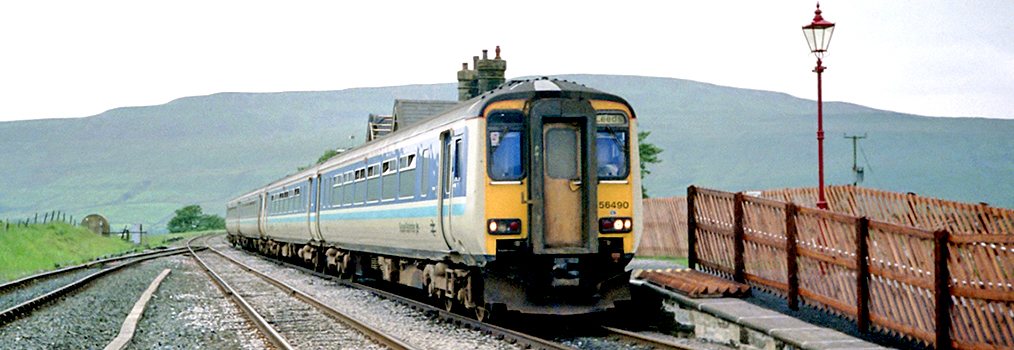In articles and speeches, I have long stressed the importance of generalised cost as a tool in understanding, developing and improving the bus product. This was dismissed in some quarters as being "too deteministic" and dismissive of the power of marketing. This article from February 2008 addressed the criticism and pointed out that setting generalised cost analysis and marketing against one another was setting up a false dichotomy.
There seems to be a movement in some academic/consultancy circles which seeks to denigrate and dismiss the whole concept of generalised cost modeling as “deterministic”, and replace it with some fuzzy concepts built round web marketing. These would be designed, to quote one recent letter to the editor of Local Transport Today, to “make bus travel cool”.
There is in reality no difference whatever between a marketing and a modeling approach to bus travel – or indeed any other form of public transport. They are (or should be) both designed to understand and analyse consumer behaviour.
The proper function of marketing is to research and understand customer needs and desires, to design products which meet those needs and desires and then sell them at a profit. Transport planners analyse and understand people’s needs and desires for travel, design networks which will meet those needs and then procure/provide those networks – either at a profit or on the basis of minimum subsidy.
The two disciplines are – or should be - fulfilling the same function, and to my mind at least, pretending otherwise betrays sloppy thinking and a lack of rigour.
Indeed, people who try to denigrate or ignore the concepts behind generalised cost modelling are missing out on a hugely valuable tool which enables us to understand, analyse and (to some extent at least) predict customer reactions and behaviours.
For example, any rational generalised cost analysis of local journeys will enable us to understand why the bus has such difficulty in winning back motorists: analysis shows that the bus costs typically at least three times more than the car in terms of time, fare and the ‘hassle’ factor.
This does not, of course, imply that most consumers make such an analysis prior to every journey that they make: but it does help us to understand why the majority of people make that choice, and provide us with a list of actions which we as operators, planners and highway authorities can take in order to improve the equation.
There is a huge range of things we can do to reduce the generalised cost of public transport modes, all of which will have an effect: cutting journey times both perceived and actual by running faster (for example by removing cash transactions from the buys) and improving reliability; reducing waiting times by running higher frequencies; reducing the wait time penalties by providing real-time information and better facilities at stops and stations; and reducing the mode penalty (or “hassle factor”) by improving the overall quality and image of the product.
As well as reducing the generalised cost of the public transport mode, all these measures would be a classic ‘marketeers’ approach to improving the public transport product as it is delivered on the ground.
Equally, however, any professional marketer will tell you that what really matters is the public’s perception of a product. And this is where promotion comes in – the word so often substituted, wrongly, by marketing.
Traditional analysis says that good promotional activity fulfils three vital roles: it informs, it creates desire and it provides access.
Informing our customers and potential customers about our products is of course fundamental to the promotion of public transport: it is also essential in the generalised cost approach too, because of course the whole point of this concept is that it assumes perfect information: i.e. that each consumer has access to all the relevant data about the cost of his or her journey – in terms of both cash and time – in order to make an informed choice about which mode would be the cheapest.
In public transport, creating desire for the product is a difficult area, because of course there is no desire for transport in itself (apart from a few thousand enthusiasts). The overwhelming majority of people use transport simply as a means to an end. Hence the tendency of leisure-based marketing of transport to be about destinations rather than modes: it is the attractive destination or journey purpose which makes the journey worthwhile.
Where this area is important, however, is in informing and correcting perceptions about the industry – getting across the quality message, for example, or reminding people how fast or frequent your service actually is. Research constantly shows that non-public transport users over-estimate the time their journey would take by bus or train (and also under-estimate the time taken by car).
Providing access to the product – knowing where and how to get on, how much it will cost, and when it comes back - are of course also fundamental, especially when the competition is the private car sitting on the drive outside.
As we can see therefore, true and rigorous use of marketing analysis and transport planning techniques are complementary rather than competing, and proper use of techniques will always bring the same answer: the customer is king. As an industry, we have enough problems without making life more difficult for ourselves by setting up false disagreements about methodologies.



